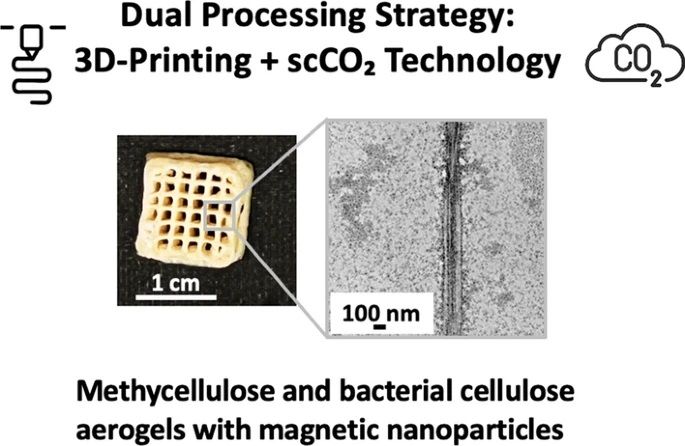
New paper in Cellulose!
The article “Cellulose-in-cellulose 3D-printed bioaerogels for bone tissue engineering” has been published in Cellulose journal.
NN group member Nanthilde Malandain collaborated in this interesting paper about the synthesis and characterization of nanostructured scaffolds based on bacterial nanocellulose for bone tissue engineering under the supervision of Anna Laromaine, Anna Roig and Carlos A. García-González.
Abstract:
Nanostructured scaffolds based on cellulose with advanced performances and personalized morphologies for bone tissue engineering are under technological development. 3D-printing and supercritical carbon dioxide (scCO2) technologies are innovative processing strategies that, when combined, allow the precise fabrication of highly porous aerogel scaffolds. Novel sterile cellulose-in-cellulose aerogels decorated with superparamagnetic iron oxide nanoparticles (SPIONs) are synthesized in this work by an integrated technological platform based on 3D-printing and scCO2. Methylcellulose (MC) and bacterial nanocellulose (BC) are two versatile cellulosic polysaccharides with remarkable physicochemical and biological performances, whereas SPIONs are commonly used to functionalize biomaterials aimed at tissue engineering. Aerogels with hierarchical porosity and high structural resolution were obtained according to nitrogen adsorption–desorption analysis, confocal, scanning and transmission microscopies (SEM and TEM). The magnetic properties of SPIONs-doped aerogels confirmed the correct functionalization of the nanostructures. Finally, NIH/3T3 fibroblast cell viability, hemocompatibility with human blood and safety tests (in ovo with HET-CAM and in vivo with Artemia salina) indicate the biocompatibility of the cellulose-in-cellulose aerogels.
3D-printing, Anna Laromaine, Anna Roig, Bacterial nanocellulose, nanthilde malandain, porous aerogel scaffolds, SPIONs

